Germany is home to some of the most iconic and historically significant architectural marvels in the world, many of which are crowned with stunning metal domes. These domes, made from metals such as copper, zinc, and lead, not only serve as prominent features in the skylines of German cities but also represent the rich cultural and architectural heritage of the nation. From the Gothic spires of Cologne Cathedral to the Baroque elegance of Charlottenburg Palace, each dome tells a unique story of craftsmanship, design, and historical significance. This article explores 25 of the most famous metal domes in Germany, highlighting their architectural beauty and the materials that give them their distinctive character.
Berlin Cathedral (Berliner Dom)
- Description: The Berlin Cathedral is a grand Protestant cathedral in Berlin. Its dome is a central feature of the Berlin skyline.
- Metal: The dome is covered with copper.
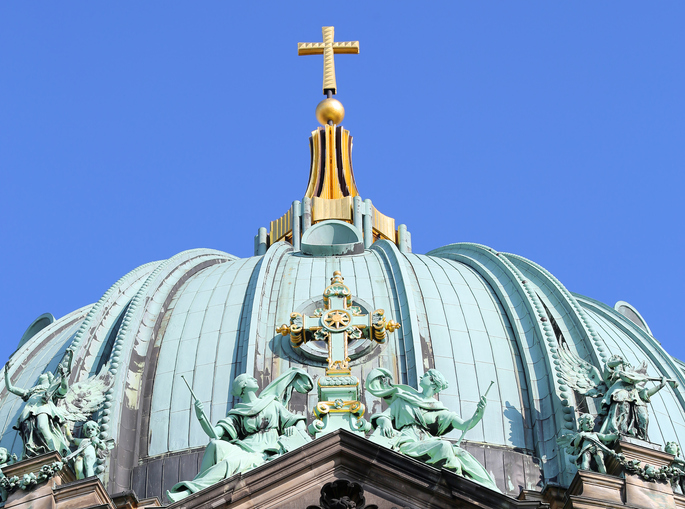
Frauenkirche, Dresden
- Description: The Frauenkirche in Dresden is a Lutheran church with a distinctive Baroque dome, known as the “Stone Bell.”
- Metal: The dome is made of stone with copper elements.
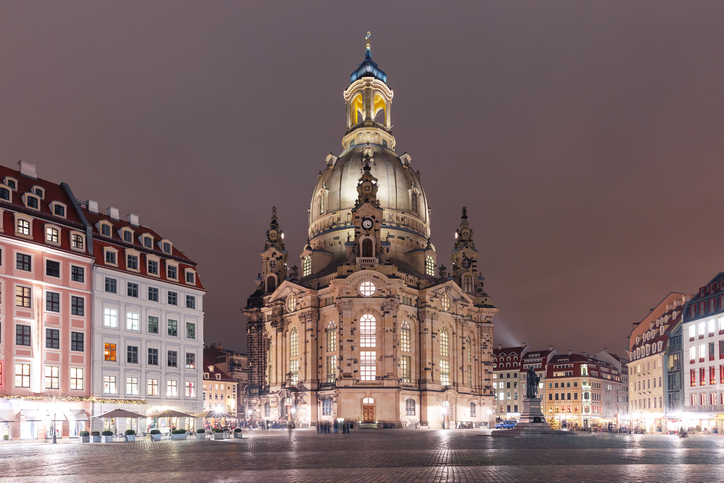
Aachen Cathedral (Aachener Dom)
- Description: Aachen Cathedral is a UNESCO World Heritage site and one of the oldest cathedrals in Europe. The dome is octagonal and Byzantine in style.
- Metal: The dome is primarily covered in lead.
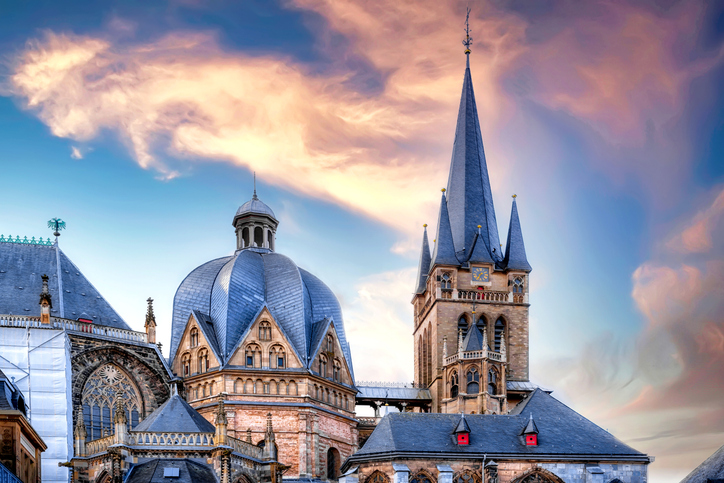
St. Hedwig’s Cathedral (Sankt-Hedwigs-Kathedrale), Berlin
- Description: St. Hedwig’s Cathedral is the Catholic cathedral of Berlin, known for its distinctive circular shape and copper dome.
- Metal: The dome is covered with copper.
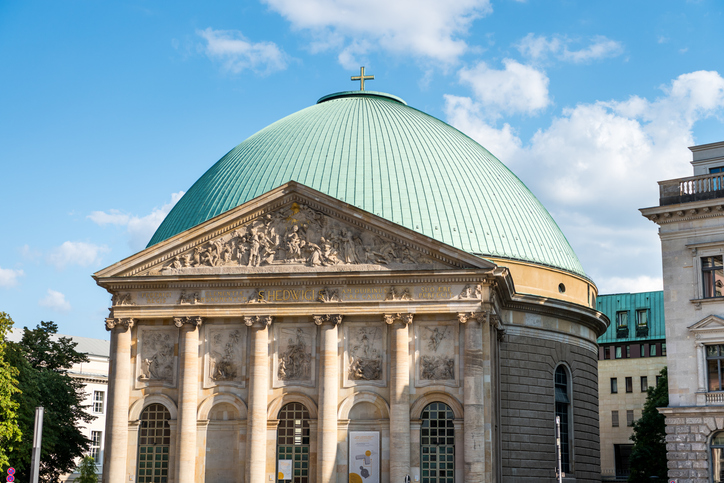
St. Paul’s Church (Paulskirche), Frankfurt
- Description: St. Paul’s Church is a historical church in Frankfurt known for its political significance. The dome is prominent in the cityscape.
- Metal: The dome is covered with copper.
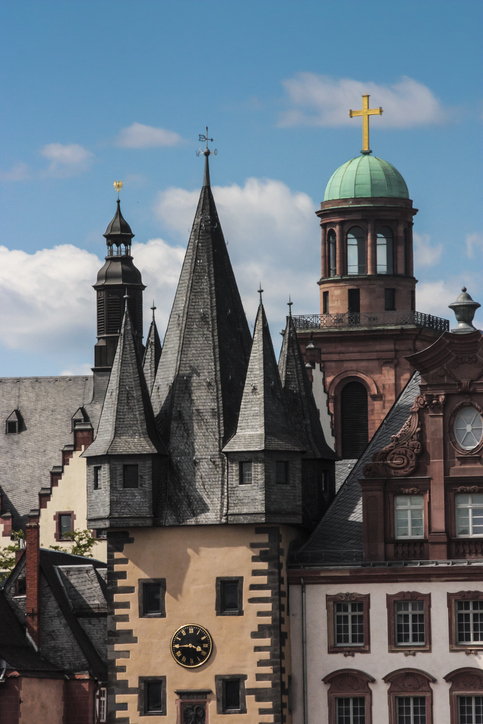
Frauenkirche, Munich (Cathedral of Our Dear Lady)
- Description: The Frauenkirche, officially known as the Cathedral of Our Dear Lady, is the largest church in Munich and a major landmark. The Gothic structure, completed in 1488, is famous for its imposing brick construction and distinctive twin domes.
- Twin Domes: The twin domes, added in the early 16th century, sit atop the 98-meter-high towers. These onion-shaped domes are Renaissance in style, contrasting with the church’s Gothic architecture.
- Metal: The domes are covered with copper, which has developed a green patina over time, adding to their aesthetic appeal and providing weather resistance.
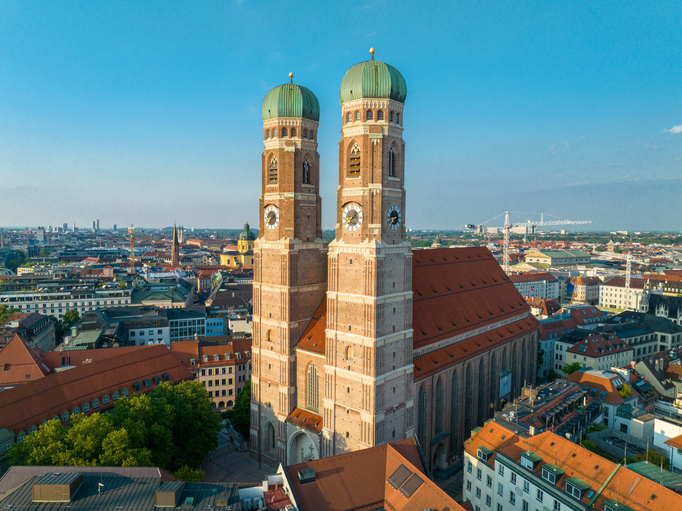
Dresden Academy of Fine Arts (Hochschule für Bildende Künste Dresden)
- Description: This institution is renowned for its distinctive glass dome, known as the “Lemon Squeezer.”
- Metal: The structure features glass with metal framing, primarily copper.
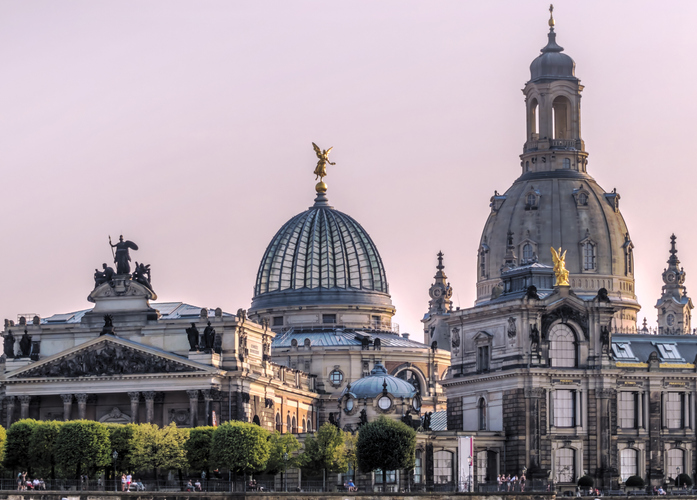
Reichstag Building (Bundestag), Berlin
- Description: The Reichstag is the seat of the German parliament and features a modern glass dome designed by Norman Foster.
- Metal: The dome has a steel frame with glass.
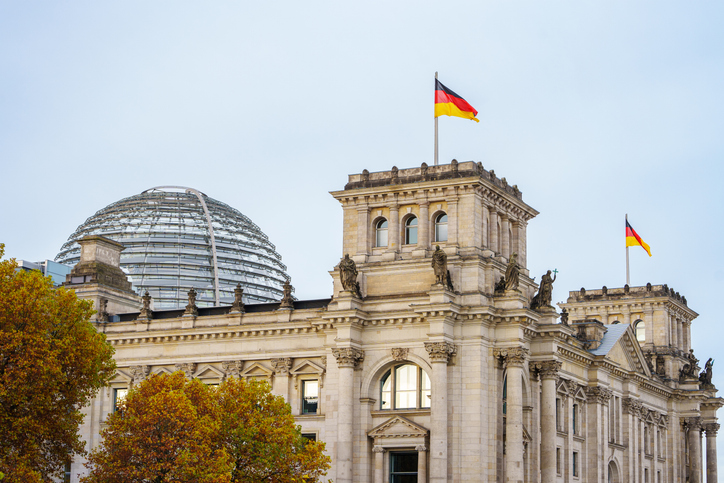
Charlottenburg Palace (Schloss Charlottenburg), Berlin
- Description: Charlottenburg Palace is a baroque palace with a grand dome crowning the central structure.
- Metal: The dome is covered with copper.
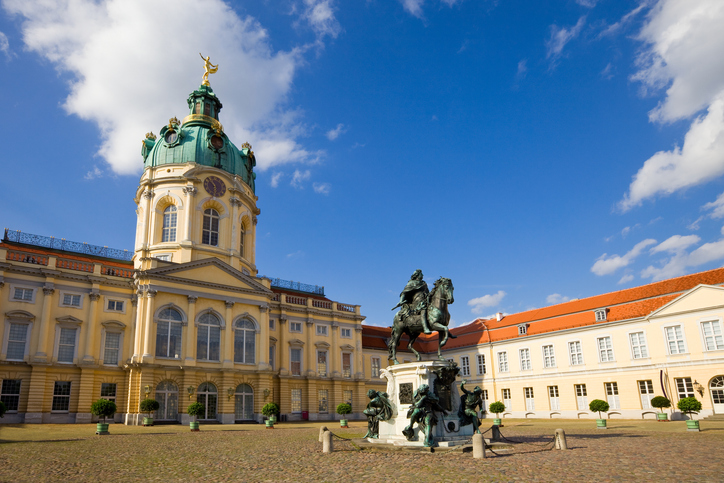
Old Town Hall (Altes Rathaus), Leipzig
- Description: The Old Town Hall in Leipzig is a historical building with a distinctive copper-covered dome.
- Metal: The dome is covered with copper.
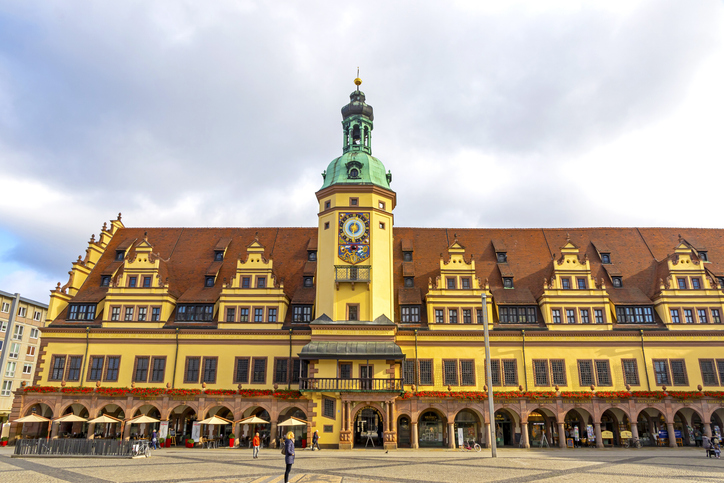
Bode Museum, Berlin
- Description: The Bode Museum is located on Museum Island and has a beautiful dome that is part of its classical architecture.
- Metal: The dome is covered with copper.
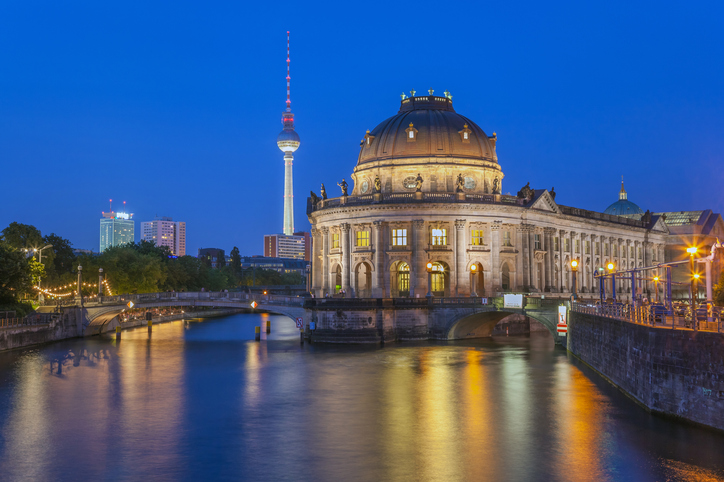
Bavarian State Chancellery (Bayerische Staatskanzlei), Munich
- Description: The Bavarian State Chancellery features a modern glass dome atop its historic structure.
- Metal: The dome is copper with roof roof made from steel frames with glass.
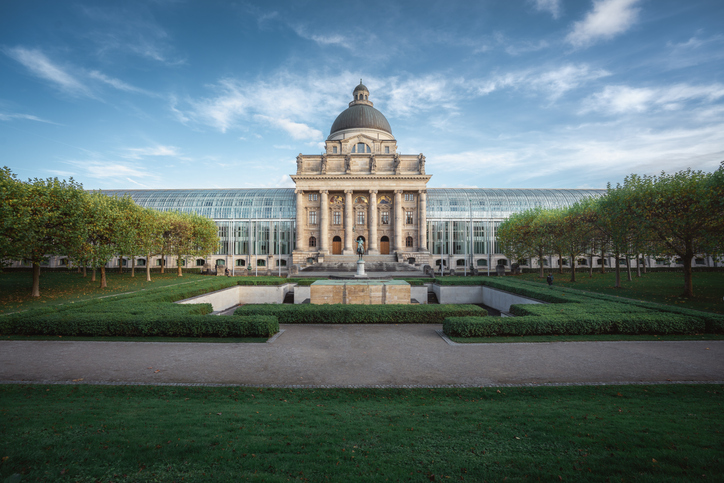
Dresden Castle (Residenzschloss)
- Description: Dresden Castle is one of the oldest buildings in Dresden and has a notable Renaissance-style dome. Ok. Maybe no domes here, but radius details for sure!
- Metal: The radius tower features are covered with copper.
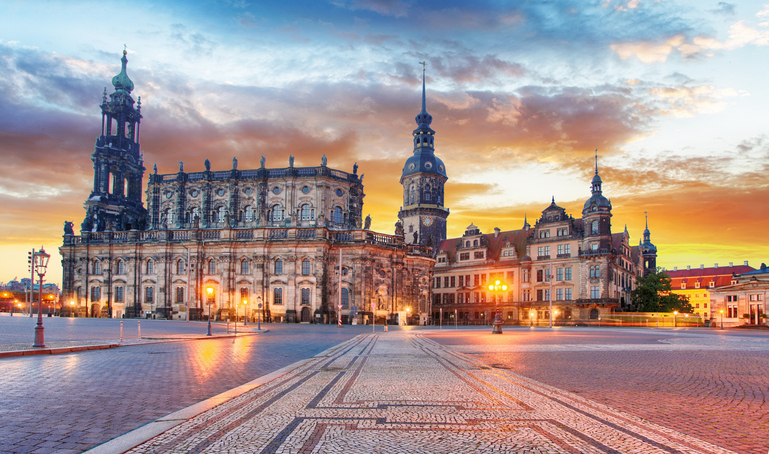
Hannover Opera House (Opernhaus Hannover)
- Description: The Hannover Opera House is an iconic building with a distinctive dome.
- Metal: The dome is covered with copper.
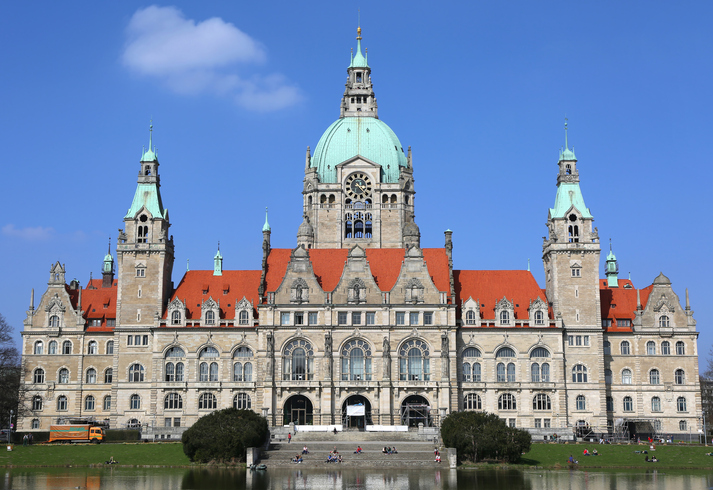
New Palace (Neues Palais), Sanssouci Park, Potsdam
- Description: The New Palace, located in Sanssouci Park in Potsdam, is a grand Baroque palace built by Frederick the Great, the King of Prussia. Constructed between 1763 and 1769, it was intended to demonstrate the power and glory of Prussia following the Seven Years’ War. The palace features opulent interiors, elaborate decorations, and impressive architectural elements. It served as a residence for the king and his guests, showcasing the grandeur of the Prussian monarchy.
- Dome: The New Palace is crowned with a distinctive central dome, adding to its majestic appearance. The dome is part of the palace’s grand design, contributing to its status as a symbol of royal power and architectural excellence.
- Metal: The dome is covered with copper, which has developed a characteristic green patina over time, enhancing its historic and aesthetic appeal.
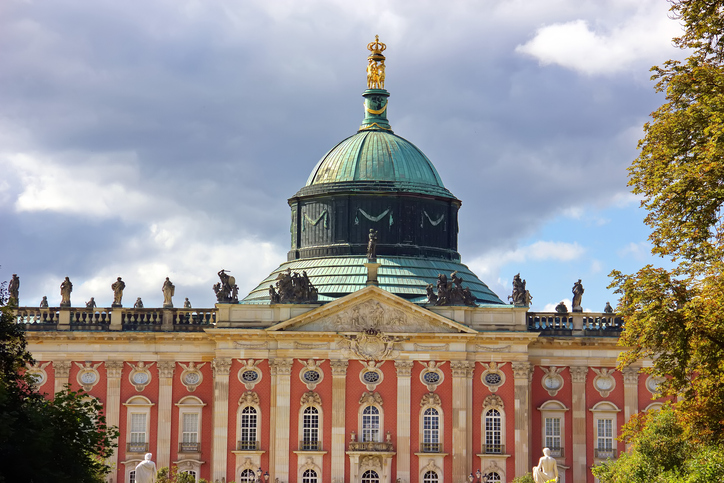
Schloss Solitude, Stuttgart
- Description: Schloss Solitude is a rococo palace featuring a small, elegant dome.
- Metal: The dome is covered with slates and copper.
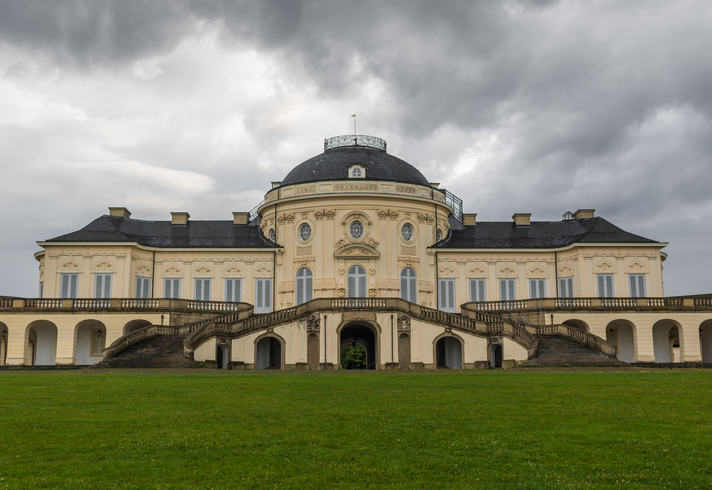
Hamburger Kunsthalle
- Description: The Hamburger Kunsthalle is an art museum with a unique architectural style and a dome.
- Metal: The dome is covered with copper.
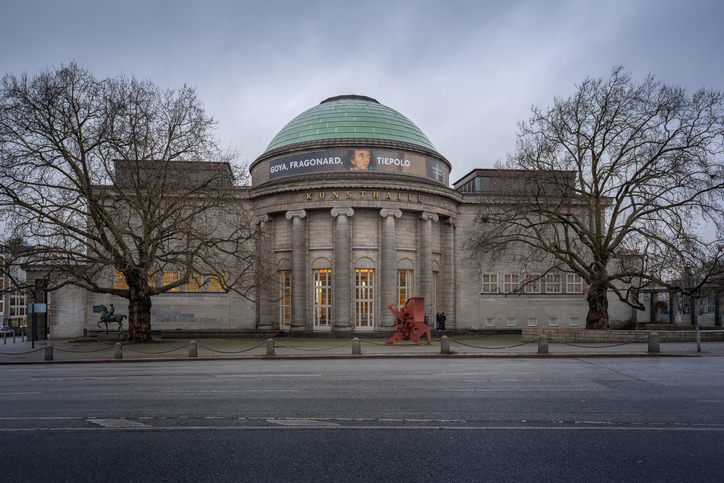
Brandenburg State Parliament (Landtag Brandenburg), Potsdam
- Description: The Brandenburg State Parliament, also known as Landtag Brandenburg, is the legislative body of the state of Brandenburg, located in Potsdam. The current building housing the parliament is a modern reconstruction of the historic Potsdam City Palace (Stadtschloss), which was originally built in the 18th century. The reconstructed palace was completed in 2014 and serves as a symbol of democratic governance and the state’s political center. The architecture of the building blends historical design with contemporary elements, reflecting both the past and present of Brandenburg.
- Dome: The Landtag Brandenburg features a prominent dome that enhances the building’s stately appearance. The dome is an integral part of the building’s design, signifying its importance and adding to the grandeur of the reconstructed palace.
- Metal: The dome is covered with copper, which provides durability and an elegant appearance. Over time, the copper develops a green patina, contributing to the building’s historic and distinguished look.
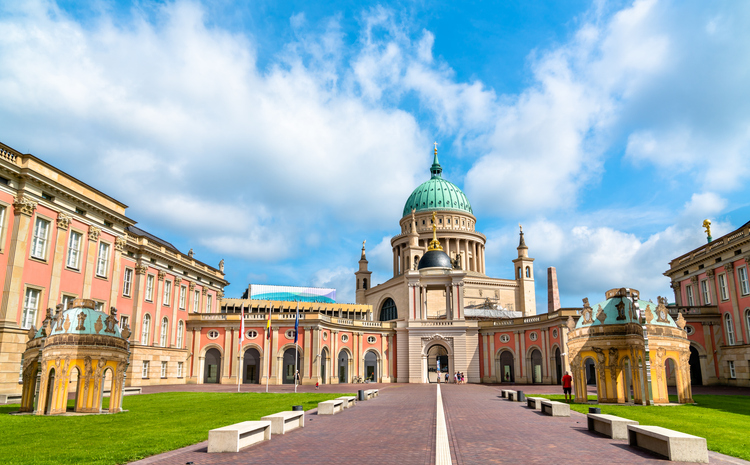
Berlin Palace (Berliner Schloss)
- Description: The Berlin Palace, also known as the Berliner Schloss, is a historic palace located in the heart of Berlin. Originally built in the 15th century, it served as the main residence of the Hohenzollern kings of Prussia and German emperors. The palace was heavily damaged during World War II and subsequently demolished by the East German government in 1950. The decision to reconstruct the palace was made in the early 21st century, and the newly rebuilt Berlin Palace was completed in 2020. It now houses the Humboldt Forum, a cultural center that hosts exhibitions and events, blending history with modern cultural exchange.
- Dome: The Berlin Palace features a grand dome that is a central architectural element of the reconstructed building. The dome, with its intricate design and impressive height, adds to the palace’s majestic presence and historical significance.
- Metal: The dome is covered with copper, which has been carefully crafted to replicate the original appearance. Over time, the copper will develop a patina, adding to the historical character and aesthetic appeal of the palace.
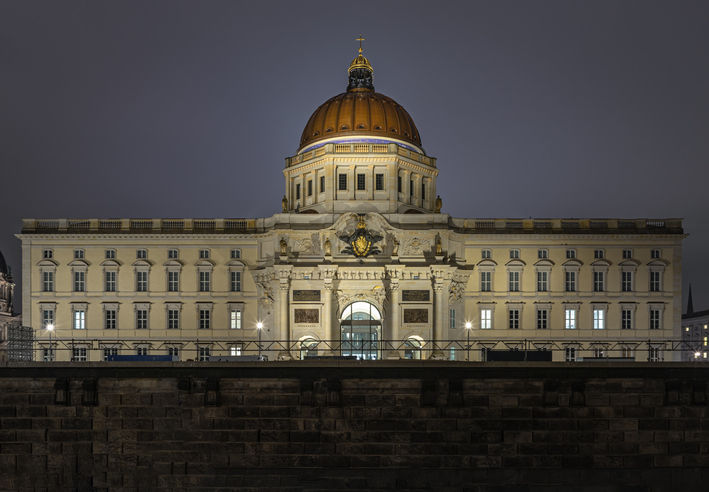
New Synagogue (Neue Synagoge), Berlin
- Description: The New Synagogue in Berlin, also known as Neue Synagoge, is one of the most significant Jewish landmarks in the city. Located in the Oranienburger Straße, it was originally constructed between 1859 and 1866 in the Moorish Revival style. The synagogue is renowned for its intricate façade, richly decorated with oriental motifs, and its historical significance as a center of Jewish life in Berlin. It was heavily damaged during Kristallnacht in 1938 and further during World War II. The building has since been restored and now serves as a cultural and religious center, as well as a museum.
- Dome: The New Synagogue is crowned with a stunning central dome, which is one of its most distinctive features. The golden dome, with its star-patterned decoration, is visible from afar and symbolizes the resilience and enduring presence of the Jewish community in Berlin.
- Metal: The dome is covered with gilded copper, giving it a brilliant, shimmering appearance. The gilding adds to the dome’s grandeur and makes it a standout feature of Berlin’s architectural landscape.
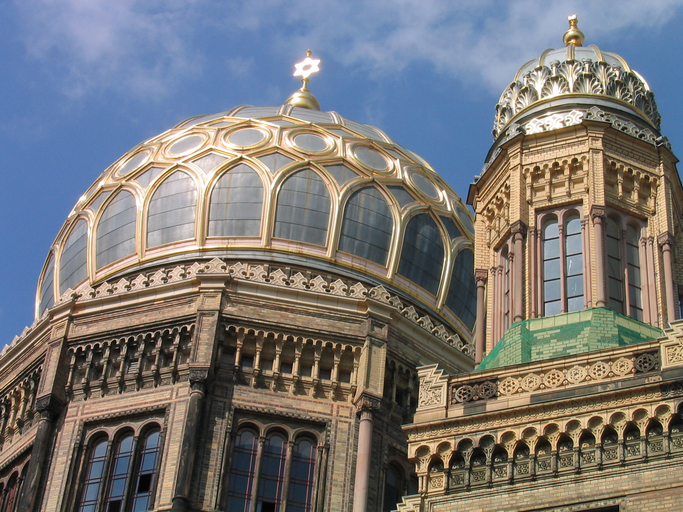
St. Nicholas’ Church (Nikolaikirche), Potsdam
- Description: St. Nicholas’ Church, also known as Nikolaikirche, is a prominent Lutheran church located in the heart of Potsdam. Designed by renowned architect Karl Friedrich Schinkel, the church was completed in 1837. It exemplifies neoclassical architecture with its grand façade and impressive columns. The church has played a significant role in the religious and cultural life of Potsdam and stands as a testament to the city’s rich architectural heritage.
- Dome: St. Nicholas’ Church is distinguished by its large central dome, which dominates the Potsdam skyline. The dome is an essential element of the church’s neoclassical design, contributing to its majestic and imposing presence.
- Metal: The dome is covered with copper, which has developed a beautiful green patina over time, adding to the church’s historical and aesthetic appeal.
Hanseatic Higher Regional Court (Hanseatisches Oberlandesgericht), Hamburg
- Description: The Hanseatic Higher Regional Court, known as Hanseatisches Oberlandesgericht, is one of the most significant judicial institutions in Hamburg. Established in 1879, it serves as the highest court of the Free and Hanseatic City of Hamburg. The court is housed in a historic building located in the heart of Hamburg, renowned for its neoclassical architectural style. The structure reflects the importance of Hamburg as a major legal and commercial hub within Germany.
- Dome: The Hanseatic Higher Regional Court features a prominent central dome, which adds to the building’s grandeur and authoritative presence. The dome is a key architectural element, enhancing the court’s distinguished and stately appearance.
- Metal: The dome is covered with copper, which has aged to a rich green patina, giving the building a sense of historical depth and elegance.
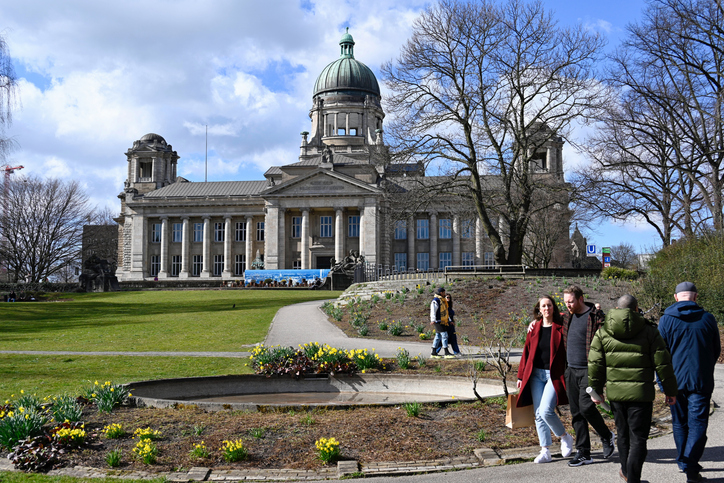
There are about 500 bazillion others, but these are some of the most famous. Which is your favorite?
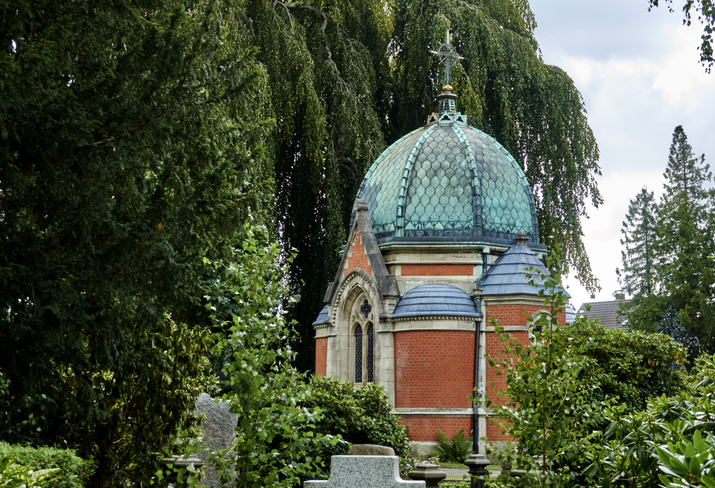
The metal domes of Germany highlight the country’s architectural innovation and historical significance. Each dome, with its unique design and material, is a key part of Germany’s heritage, attracting visitors from around the world. From the copper dome of the Berlin Cathedral to the leadwork of Aachen Cathedral, these structures represent the blend of artistry and engineering that defines German architecture. Exploring these domes, you can appreciate the craftsmanship and beauty that make them landmarks of national and cultural importance. Germany’s metal domes are more than architectural features; they symbolize the nation’s historical and cultural identity.
Domes are indeed tricky. Call us for your next dome project: historic restoration or new build. We are sure to have your solutions! 801-462-5264
Learn about our history and why we are the perfect partner to help you with your dome or radius detail roof!
#GermanArchitecture#MetalDomes#CopperDomes#ZincDomes#LeadDomes#ArchitecturalMarvels#HistoricBuildings#GermanyLandmarks#CulturalHeritage#IconicStructures#ArchitecturalHistory#HistoricDomes#BerlinCathedral#CologneCathedral#AachenCathedral#DresdenFrauenkirche#MunichNewTownHall#GermanEngineering#ArchitecturalTourism#HistoricSitesGermany#GermanCraftsmanship#ArchitecturalBeauty#Landmarks#TouristAttractions#ArchitecturalDesign
